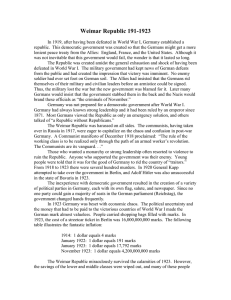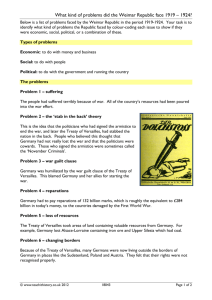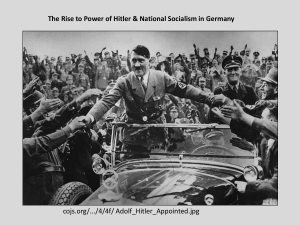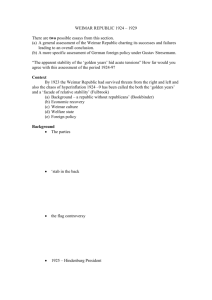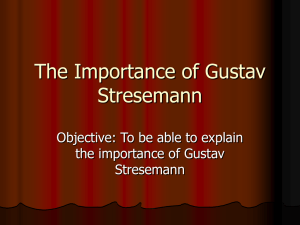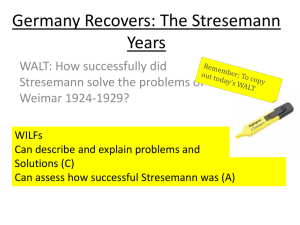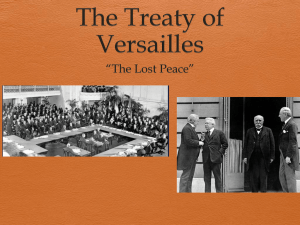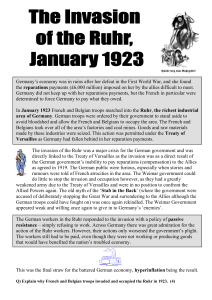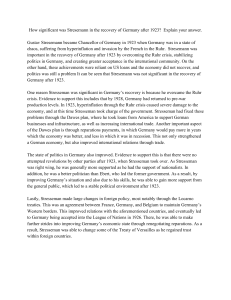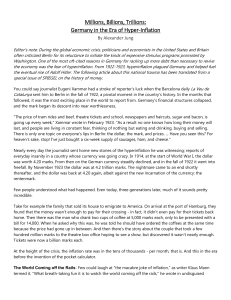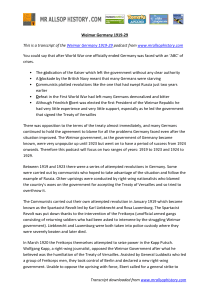Weimar Republic
advertisement
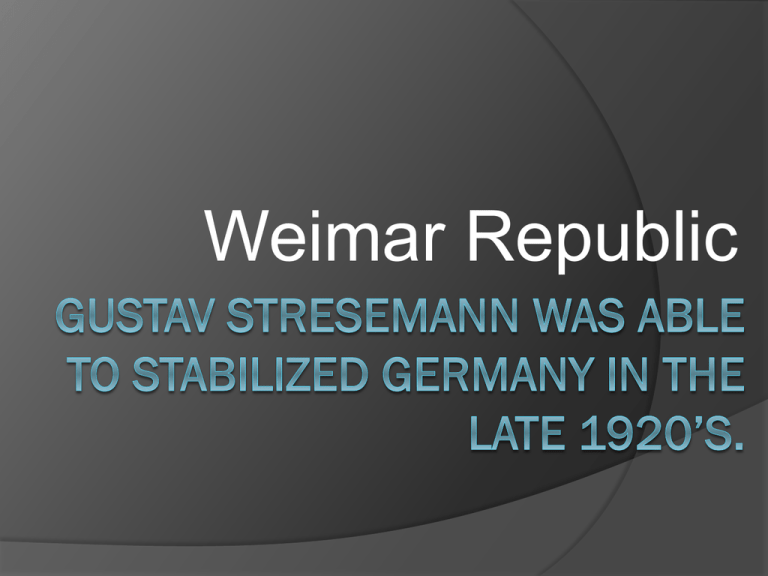
Weimar Republic Germany Reparations Germany was assessed the equivalent of $33 billion by an Allied commission in 1921 Germany made the initial payment, but asked for a three-moratorium the next year. France insisted German compliance and occupied the Ruhr Valley German government ordered the people to passively resist by not working in the coalmines and steel mills. France retaliated by closing off the border to prevent the importation of foodstuffs German economy was paralyzed, and to pay its bills, the government printed more and more money, leading to rapid inflation that wiped out the savings of many middle class families. Many Germans felt betrayed and vented their anger on the government, big business, communists, and Jews. In 1923, Hitler and a small band of anti-Semitic nationalist attempted a coup. Hitler wrote Mein Kampf and became nationally known while in prison for treason. Weimar Republic Stabilizes Germany stabilized when Stresemann ran the government between 1923 and 1929 He ended the passive resistance in the Ruhr and got the French to agree to a renegotiations of the reparations. A new currency was created which restored confidence The U.S. helped with the Dawes Plan Stresemann also ended tensions with his neighbors by signing the Locarno Pact and joining the League of Nations. Germany ended up paying off about a third of its reparations bill by 1928 Politically, moderates like Stresemann dominated and the Weimar Republic was gaining the support of the German people in the late 1920s The Nazi Party was on the fringe, winning only 12 seats in the 1928 election Nevertheless, Communists attacked the Social Democrats, who were the largest party, and divided the working classes
